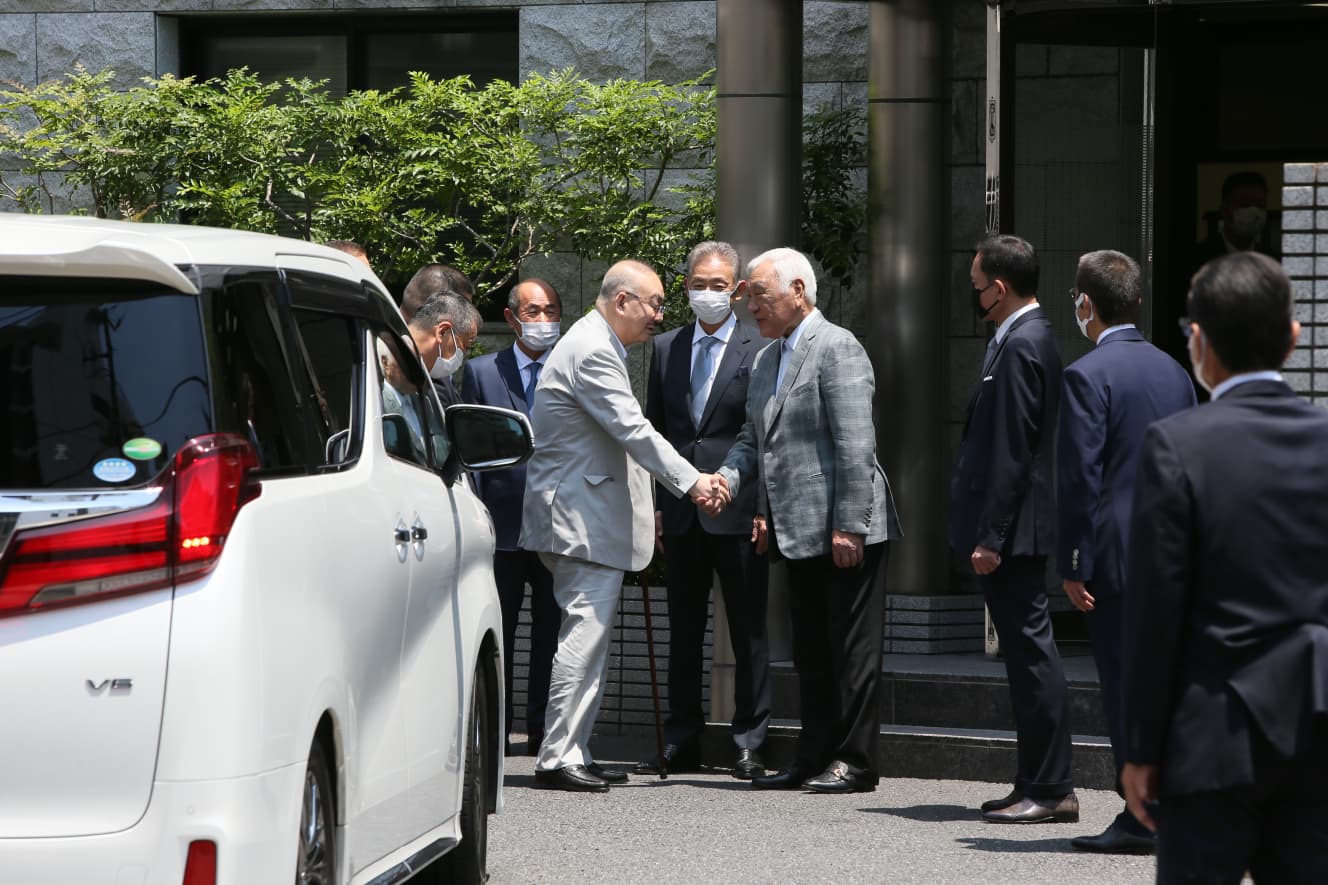Yamaguchi-gumi Turmoil Confirmed by Police Authorities: ‘Latest Power Chart’ Released
The difference in power between the Yamaguchigumi VI and Kobe is now "8 to 1" ......

Japan’s largest gang, the Yamaguchi-gumi VI, split in August 2015, and the year 2022 marks the eighth year of the rivalry with the breakaway Kobe Yamaguchi-gumi. In terms of gangs, since the nationwide ordinance for the elimination of gangs, which strongly regulates fund-raising activities, was put in place by 2011, their nationwide strength has been on a downward trend in recent years. This trend is also true for the Yamaguchi-gumi VI and Kobe Yamaguchi-gumi.
However, in 2021, an anomaly occurred: police authorities confirmed that the Yamaguchi-gumi VI had about 4,000 members, an increase of about 200 members from 2020. This was the first time that the number of members had increased since the enforcement of the anti-violence ordinance. On the other hand, the Kobe Yamaguchi-gumi was unable to halt its decline, with the number of its members dropping by less than half from the previous year to about 500, and its power shrinking significantly.
The difference in power between the Yamaguchi-gumi VI and the Kobe Yamaguchi-gumi is an overwhelming 8 to 1, according to the “latest power chart.
In real terms, the number of members has increased by about 500.
The number of members of Yamaguchi-gumi VI in 2014, before the split, was about 10,300, but it decreased significantly with the departure of Kobe Yamaguchi-gumi. At the time of the split in 2015, the Yamaguchi-gumi VI had fewer than 10,000 members and about 6,000, while the Kobe Yamaguchi-gumi had about 2,800 confirmed members.
Even though it is the largest organization in Japan, the National Police Agency statistics show that there have been a series of defections due to the effects of the anti-racketeering ordinance. According to the National Police Agency, the number of members of the Yamaguchi-gumi VI has been decreasing by about 300 every year recently: about 4,700 in 2017, about 4,400 in 2018, about 4,100 in 2019, and about 3,800 in 2020.
If this trend continues, it was expected that the number would be about 3,500 in 2021, but it was about 4,000, an increase of about 200 from 2020. The number of yakuza members is expected to increase by about 200 from 2020 to about 4,000.
The “golden signboard” of the yakuza industry
Regarding the expansion of the Yamaguchi-gumi VI’s influence, a senior police official pointed out that “the return of the Yamaken-gumi is significant. The Yamaken-gumi is an organization founded by Kenichi Yamamoto, who served for a long time as the number two young leader under Kazuo Taoka, the third generation leader of the group, who is still regarded as a deity within the Yamaguchi-gumi. For many years, it was considered the mainstream of conservatism within the Yamaguchi-gumi and remained the core organization.
A senior official of a designated gang based in the Kanto region said, “Yamaken is definitely a golden signboard and brand not only in the Yamaguchi-gumi but also in the entire yakuza industry. Yamaken’s members can be accepted anywhere in the country if they call themselves ‘Yamaken’s…’ without saying ‘Yamaguchi-gumi Sanken-gumi’s… That’s all there is to it. There are many people who yearn for the name of Yamaken and enter the organization,” he explains.

Although it was positioned as the core organization within the Kobe Yamaguchi-gumi, the Yamaken-gumi announced in July 2020 that it was leaving the group, and for a time it became a de facto independent organization. The National Police Agency said at the time, “We are aware that the Sanken-gumi is announcing its independence to various quarters. However, at this stage, we do not recognize independence. As an affiliate of the Kobe Yamaguchi-gumi and a secondary organization, it is subject to regulations under the Anti-Boryokudan Law.
What the police authorities feared was that if they were recognized as an independent organization instead of a designated crime syndicate as stipulated in the Anti-Boryokudan Law, they would be exempted from regulations such as restrictions on the use of their offices during conflicts with other organizations and the prohibition of the collection of miser’s fees from restaurants in downtown areas. In other words, it meant that the group would be positioned as a voluntary organization, like a neighborhood association or a hobby club.
Less than 20% of what it was when it was formed
However, the activities of the Yamaken-gumi became distinct from those of the Kobe Yamaguchi-gumi, and it was gradually forced to be recognized as an independent organization. In September 2021, as the police authorities were preparing to make the Yamaken-gumi an independent designated gang based on the Anti-Violence Law, they received a startling piece of information. The Yamaken-gumi had been reinstated as an affiliate of the Yamaguchi-gumi VI.
The Yamaken-gumi had been the largest force within the organization even when it was under the umbrella of the Kobe Yamaguchi-gumi. That is why it was so painful for Kobe Yamaguchi-gumi to see the Yamaken-gumi leave and then return to the opposing Yamaguchi-gumi VI.
The Kobe Yamaguchi-gumi, which had about 2,800 members at the time of the split, declined to about 1,700 in 2018, partly due to the departure of the then-ninja-gumi. The number of members continued to decline, reaching about 1,200 in 2020. Due in part to the departure of the Yamaken-gumi, the number of members rapidly shrank to about 500 in 2021.
On the contrary, the Yamaguchi-gumi VI increased to about 4,000 members due to the effect of the return of the Yamaken-gumi. As a result, Kobe Yamaguchi-gumi is now one-eighth the size of Yamaguchi-gumi VI, and the difference in power is overwhelming. At the time of the split, the Kobe Yamaguchi-gumi had about 2,800 members, so the current situation is about 18% of what it was when it was formed, or less than 20%.
What are the conditions for the end of the conflict?
As for the future of the rivalry, which is dominated by the Yamaguchigumi VI according to the latest power chart, a senior police official said, “Even if the situation becomes favorable to the Yamaguchigumi VI side, the rivalry will not end unless the Kobe side drops the signboard of ‘Yamaguchi-gumi.
In the Yamaichi War (1984-89), when the Yamaguchi-gumi split and a major war broke out between the Yamaguchi-gumi and the Ichiwakai, resulting in many deaths, the Ichiwakai threw away the Yamaguchi-gumi sign and crest. The name Yamaguchi-gumi and the Yamabishi crest were important as symbols for both fund-raising activities and internal control.
He added, “I believe that the lesson of the Yamaichi War remains that the name Yamaguchi-gumi should not be abandoned. That is why both the 6th generation and the Kobe side are sticking to the name Yamaguchi-gumi. As long as both sides continue to use the name Yamaguchi-gumi, the conflict will not end,” he said. (Titles omitted in the text)
Reporting and writing: Masahiro Ojima
Nonfiction writer. Worked at the Sankei Shimbun, where he was in charge of the National Police Agency Press Club, the Metropolitan Police Department Cap, the Kanagawa Prefectural Police Cap, the Judicial Press Club, and the National Tax Agency Press Club, before going freelance. Author of "Kaizaiya to Bubble" (Bunshun Shinsho).
Photo by: Shinji Hamasaki